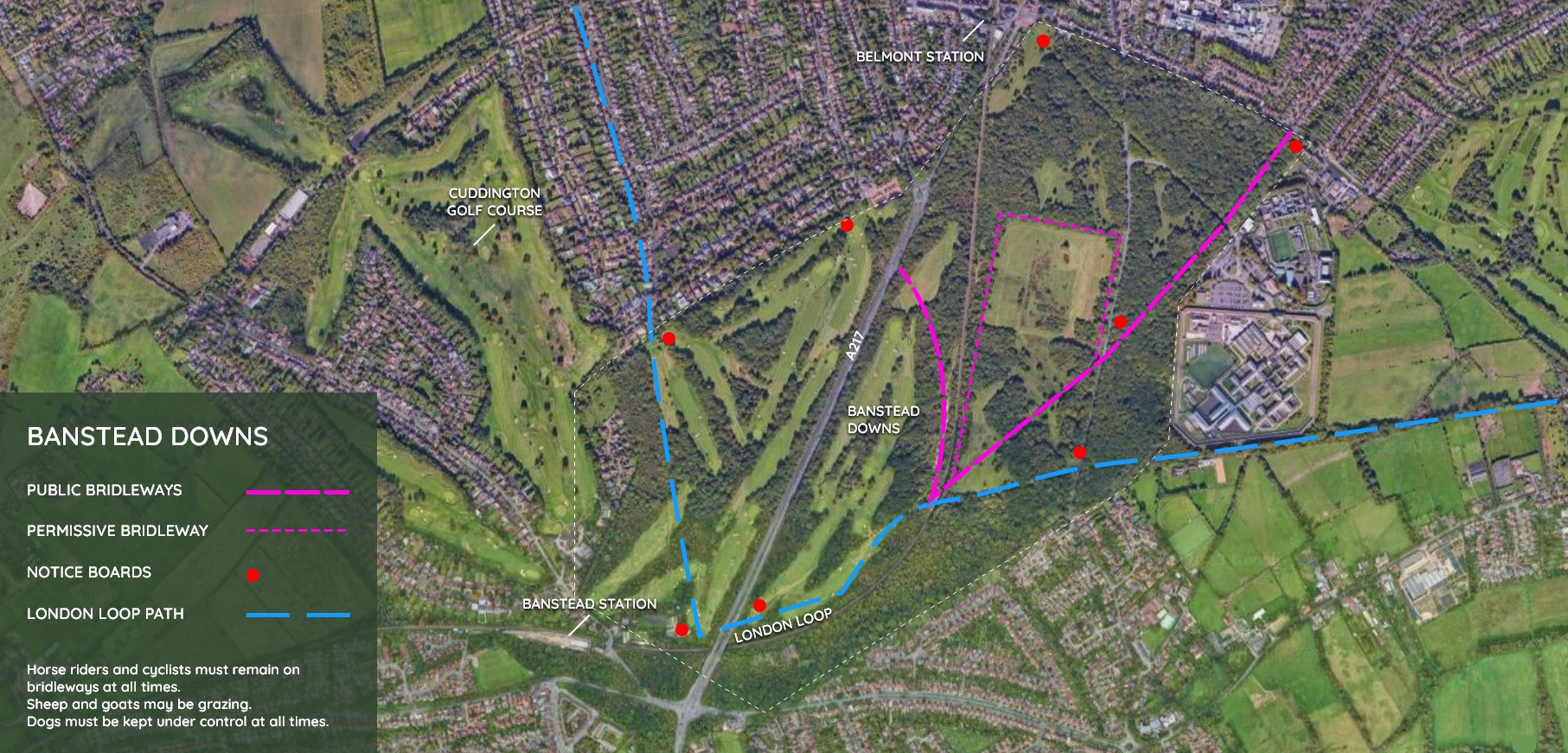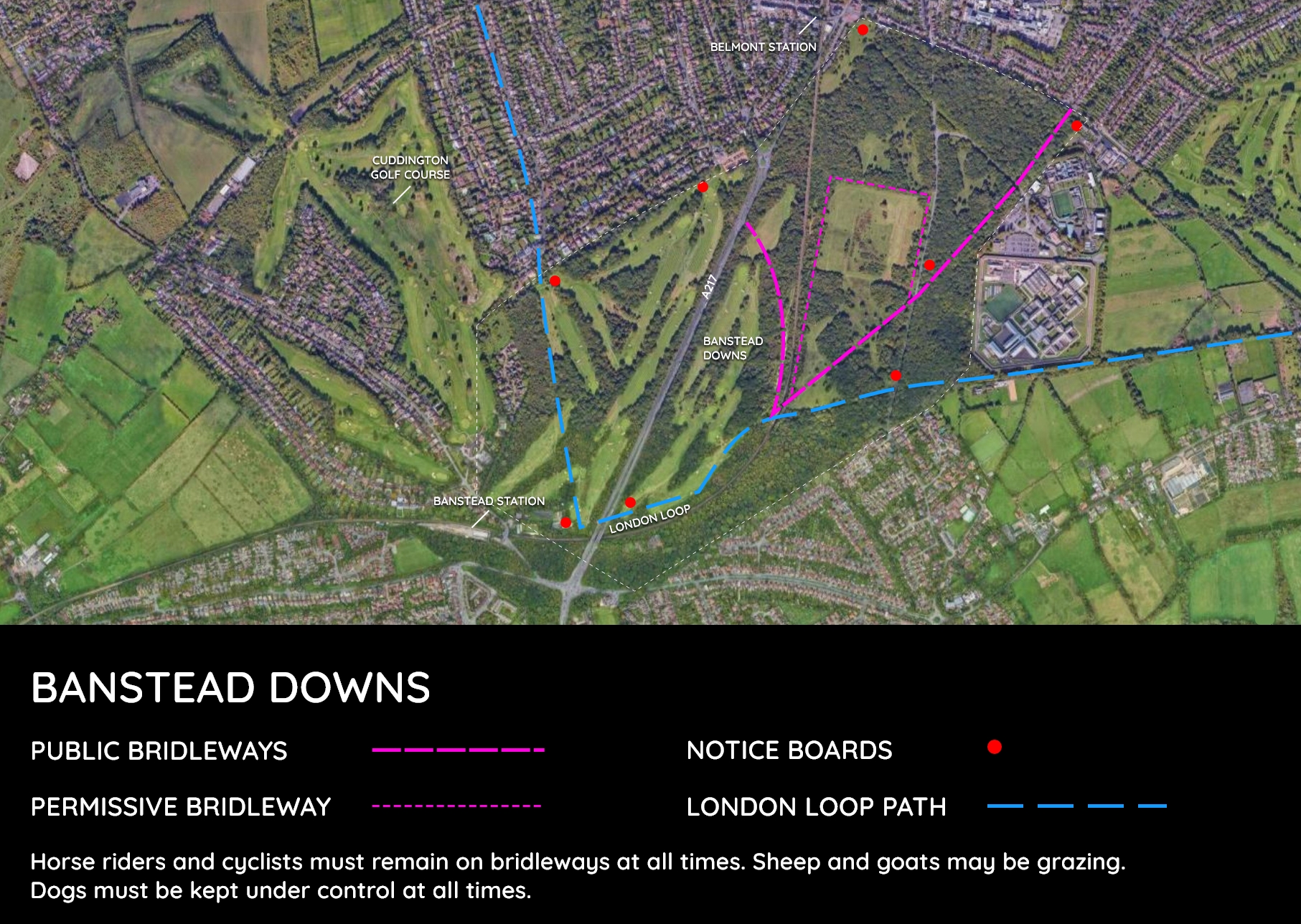Banstead Downs
Banstead Downs is a rare Chalk Downland habitat and a designated Site of Special Scientific Interest (SSSI). The area is made up of a mosaic of habitats including species-rich grassland, scrub and secondary woodland which provide the perfect environment for a diverse range of flora and fauna.
A total area of 430 acres, the site is located between Banstead to the south and Belmont (London Borough of Sutton) to the north, with Freedown and Highdown prisons on the eastern boundary and housing on the site of the old Cuddington hospital to the west. Most of the area to the west of the railway line is occupied under licence by Banstead Downs Golf Club.
Download Site Map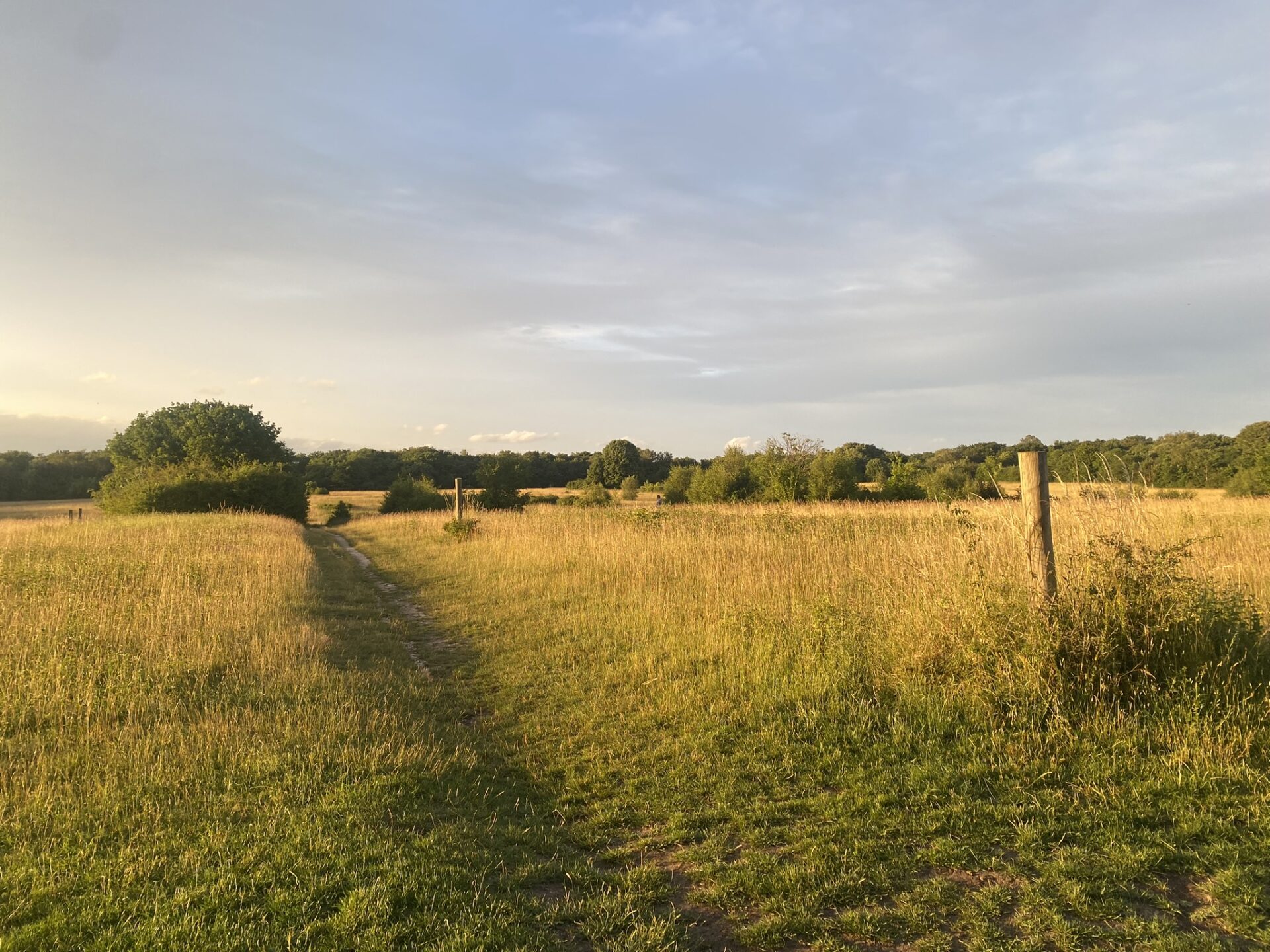
Habitats
The extensive open chalk grassland, scrub and woodland areas of Banstead Downs are on the dip slope of the North Downs escarpment. in 1995 it was designated an SSSI because the diversity of habitats makes it an important site for birds, invertebrates and chalk flora.
Many biological surveys carried out, both formal and informal, and the site boasts the longest-running UK Butterfly Monitoring Scheme transect in Surrey - continuous from 1986.
One of the main aims of the current management plan of Banstead Downs is to restore and enhance the chalk grassland, which is one of the richest habitats in Western Europe for plants - often with 40 or more different species in just one square metre.
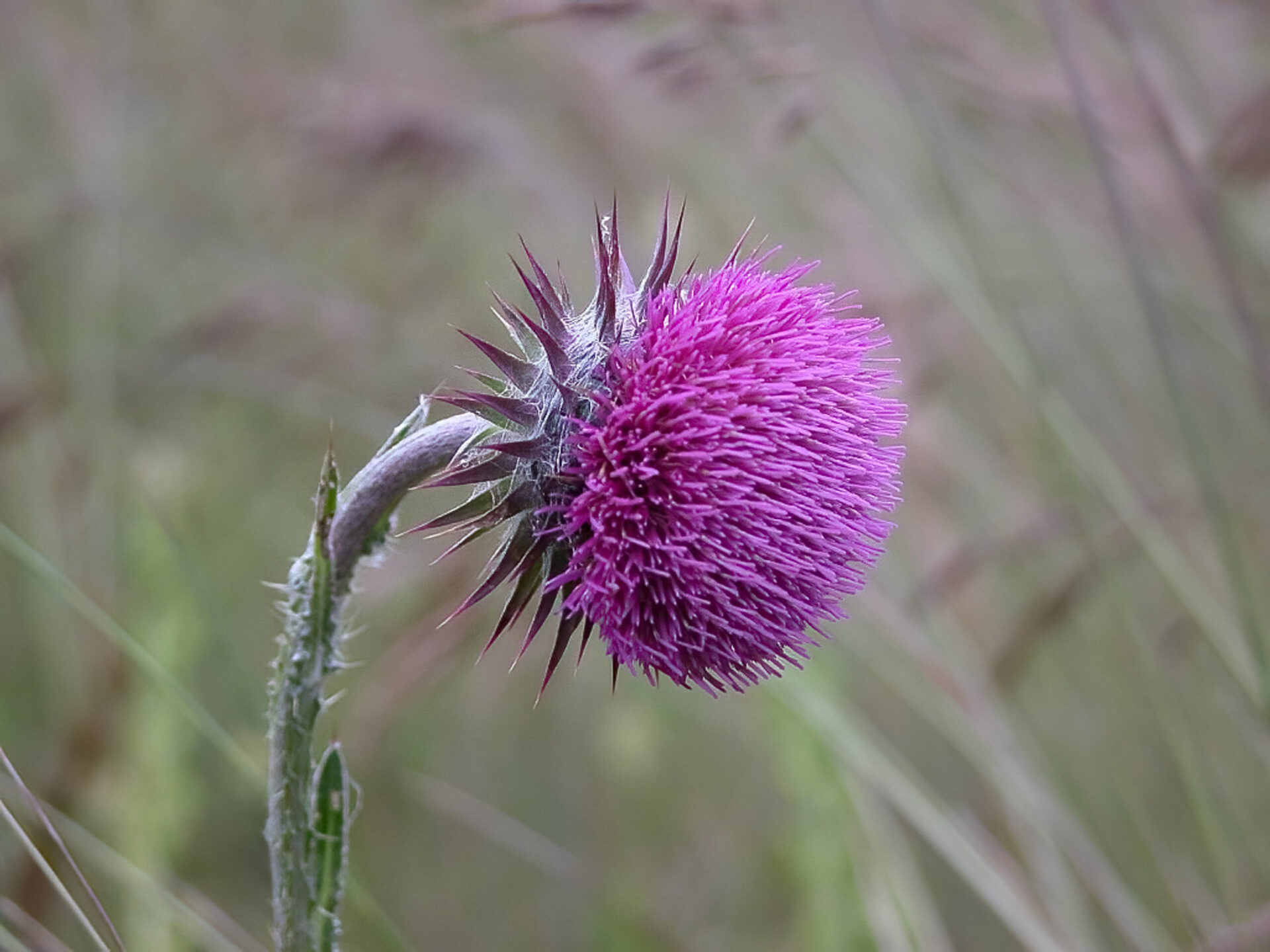
Flora
The scrub on Banstead Downs can be dominated by Common gorse. The other scrub species include dogwood, privet, hawthorn, blackthorn, spindle and buckthorn, which are at their most attractive in the autumn and when their fruit provides an important food source for birds.
Chalk grassland is renowned for the diversity of the plant species which depend on it and can grow nowhere else. These in turn provide food for many animals, especially butterflies. Typical chalk grassland species include kidney vetch, horse-shoe vetch, ox-eye daisy, purging flax, common and chalk milkwort, carline thistle, musk thistle,dropwort and eyebright, plus many others. In later summer greater knapweed can provide a spectacular display in the more open areas
A number of particular rarities can be found at Banstead Downs including early gentian and broad-leaved cudweed, both of which are nationally endangered.

Fauna
Mammals regularly seen on the Downs include roe deer, foxes and rabbits. Smaller mammals including stoats, weasels, voles and shrews are not necessarily easily seen.
The Downs support a wide range of species, the most colourful of which include greater-spotted and green woodpeckers, bullfinches and goldfinches. Kestrels, sparrowhawks and buzzards nest on the site. In the winter large mixed flocks of birds are often seen in the denser scrub. The most notable bird species are the summer visitors. The open scrub supports a large population of the more common warblers such as whitethroats, blackcaps, and garden warblers.
Since 1986, 33 species of butterfly have been recorded, amongst the most prominent being four species of blues (Common, Small, Chalkhill and Holly).
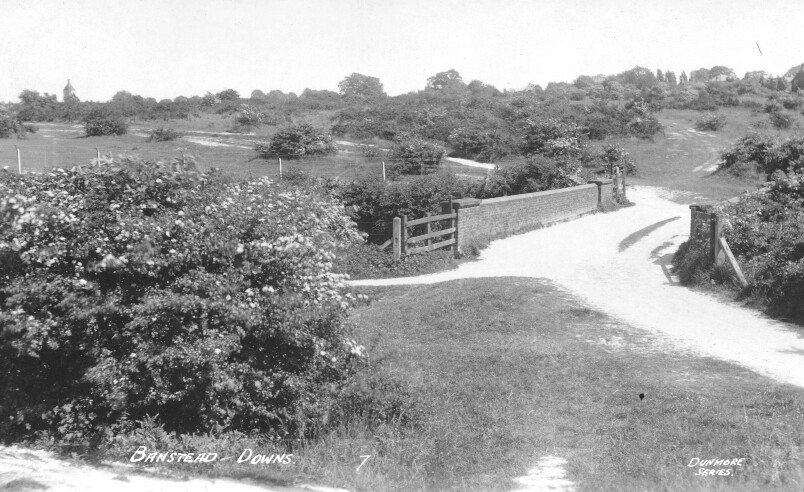
Archaeology
The most important archaeological sites on Banstead Downs are the four Ancient Monuments known as the Gally Hills. These tumuli are rare examples of Anglo-Saxon hlaews (burial mounds or barrows). They may originally have served as territorial markers but the name Gally Hills dates from much later. It is a corruption of ‘Gallowes Hills’, which is what the mounds were called in the late Middle Ages. An early 16th-century map indicates that they were the meeting point of four manors, with each being a site where the manor executed criminals and hung their bodies on public display in iron gibbets.
Excavations have revealed not only the original Anglo-Saxon burial of a warrior or chieftain but also a later posthole where a gibbet had been erected. There is evidence from one of the hlaews that the primary Anglo-Saxon burials were laid out on a circular platform of flint nodules. The use of a platform of stones to support the body can be compared with a similar Anglo-Saxon burial in Ewell, which was laid out on a circle of Romano-British roof tiles, apparently taken from the ruins of a nearby villa.
Map of Banstead Downs
